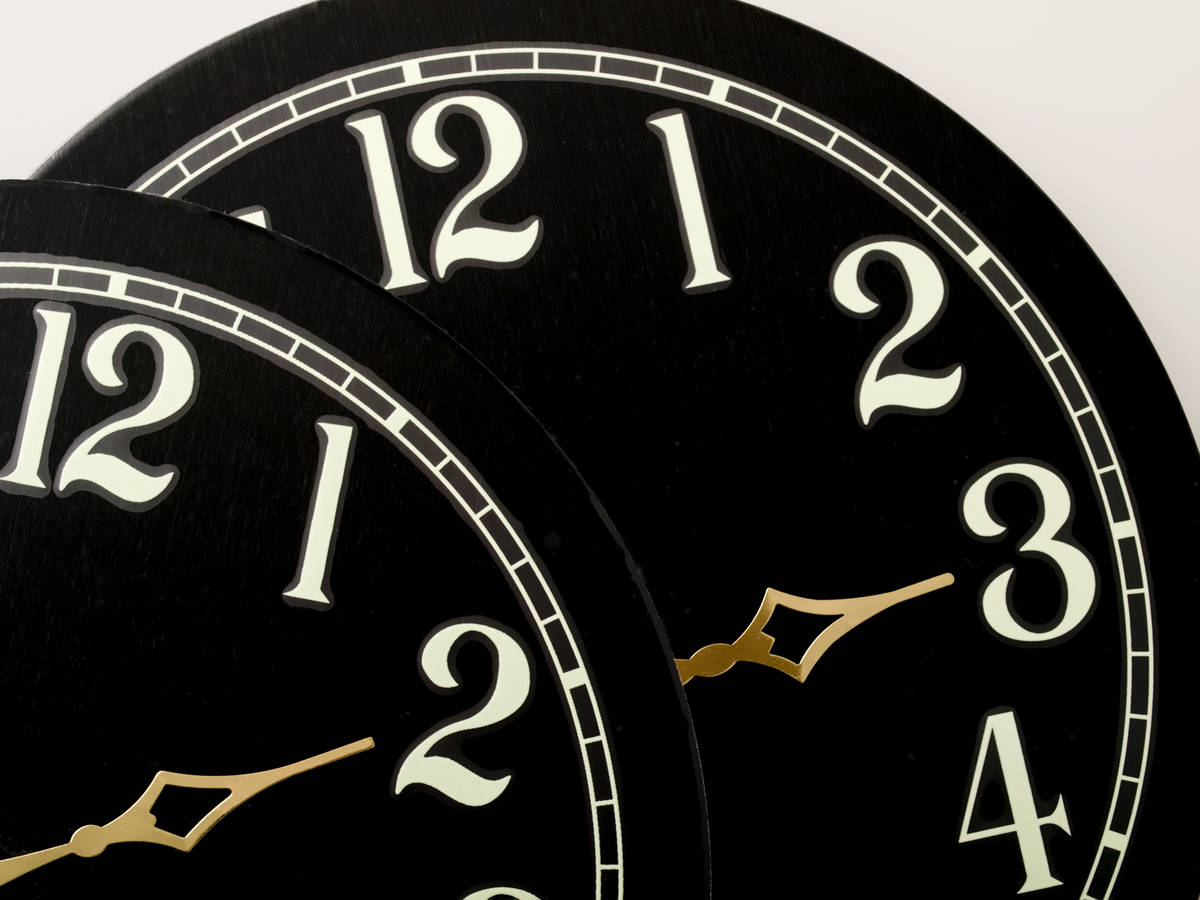Nevada may turn out the lights on daylight saving time
The national debate over the twice-a-year changing of clocks from standard to daylight saving time and back is so persistent and predictable that you could, er, set your clock by it.
The subject is back before the Nevada Legislature again this year, with a substantial chance that lawmakers will see daylight to approve a change.
If only that would turn out the lights on the matter.
Senate Bill 153 would put Nevada on a path to observe either daylight saving time or standard time year round; one sponsor of the bill called the current semiannual change “archaic in today’s modern age.” A similar effort passed easily as a resolution in 2015. The nation switches to daylight saving time at 2 a.m. Sunday, moving clocks ahead one hour.
The Nevada bill awaits a hearing in committee and comes with a hitch: Federal law, which allows states to skip daylight saving time entirely and observe standard time all year, as Arizona and Hawaii do, does not similarly permit states to make daylight saving time permanent.
So the Nevada bill, if approved, has two caveats: Moving Nevada to daylight time will only take effect with federal authorization and if neighboring California also enacts the change. Golden State voters authorized the move in 2018 but the Legislature hasn’t acted yet.
Moving Nevada to full-time standard time also would happen only if California does the same.
Hence, Nevada’s bill attempts to separate night from day with the option to go either direction. By tying Nevada’s change to action by California, it also sidesteps a concern of those who oppose the change for fear that a fractured time zone map would complicate life for those who live in the Far West, and who make up a big part of Nevada’s drive-in casino customer base.
Simplify, and conquer
The tactic is exactly how the Utah Legislature moved a similar bill through in 2020. Supporters there conditioned its implementation on federal action and on approval by at least four other Western states. That has already occurred, with Idaho, Oregon, Washington and Wyoming among 16 states to date where laws, resolutions or voter initiatives have passed since 2018. Alabama, Arkansas, Delaware, Florida, Georgia, Louisiana, Maine, Ohio, South Carolina and Tennessee round out the list.
Utah proponents also sought to simplify the debate, which gets complicated because there are actually three choices: switch to full-time daylight saving time, to full-time standard time, or leave everything as is. In gauging support, they cast the debate as of question of more or less functional daylight time.
Action in states and Congress
The National Conference of State Legislatures, which has a standalone policy page tracking state action on the subject, counted 85 pieces of legislation on the subject in 32 states last year. And this year, a Senate bill with bipartisan backing is again before Congress: The “Sunshine Protection Act,” with Sen. Marco Rubio, R-Florida, as prime sponsor, would make daylight saving time permanent year round except for states on permanent standard time.
“Americans’ lifestyles are very different than they were when Daylight Saving Time began more than a century ago,” another supporter, Sen. Sheldon Whitehouse, D-R.I., said in a release. “Making Daylight Saving Time permanent will end the biannual disruptions to daily life and give families more daylight hours to enjoy after work and school.”
Business interests
The first appearance of daylight saving time in the U.S. dates to 1916. The move was never about farmers or agriculture — cows, after all, don’t wear watches, and farmers opposed the time change because it upset their schedules. Rather, business interests thought an extra hour of daylight would mean more customers.
Proponents also made the argument that daylight saving time saved energy; it was observed year round in the U.S. during World War II and again during the 1974 oil crisis, though it was reversed amid concerns that included students having to go to school in the dark. In 2005, Congress extended annual daylight saving time observance from six months to eight, March to November.
Energy savings remains official federal policy for the clock switching. The U.S. Department of Transportation, on a webpage last updated in 2014, says more daylight means lower electricity consumption, in addition to fewer accidents and less crime.
But increasing concerns and studies in the U.S. and elsewhere cite potential health effects and contrary findings — some find more accidents and workplace injuries occurring, not fewer, because of people not adjusting to the time change. Studies also question energy savings.
“As a seasoned family practice doctor I believe Daylight Saving Time is archaic in today’s modern age and desynchronizes our circadian rhythm, resulting in adverse health effects such as an increase in cardiovascular diseases, injuries, mental and behavioral disorders, and issues with the immune system including rising cortisol levels,” said Assemblywoman Robin Titus, R-Wellington, the GOP Assembly caucus leader. She cited “numerous studies demonstrating this in the U.S., Sweden, Denmark, and Australia.”
Titus is a sponsor of the bill to pick one or the other, along with Republican Sens. Pete Goicoechea of Elko and Joe Hardy of Boulder City.
The American Academy of Sleep Medicine comes down on the side of full-time standard time, saying daylight saving time “is less aligned with human circadian biology.” Proponents of year-round daylight saving time tend to be advocates for outdoor recreation and businesses that benefit from more activity, such as service stations.
Nevada’s 2015 effort, which called simply for a one-way move to daylight saving time but carried less weight as a resolution, passed easily in both the Assembly and Senate. In 2021, a more flexible proposal, this time in bill form, could take the state in either direction.
At the end of the day, that could make it just as likely to pass.

















